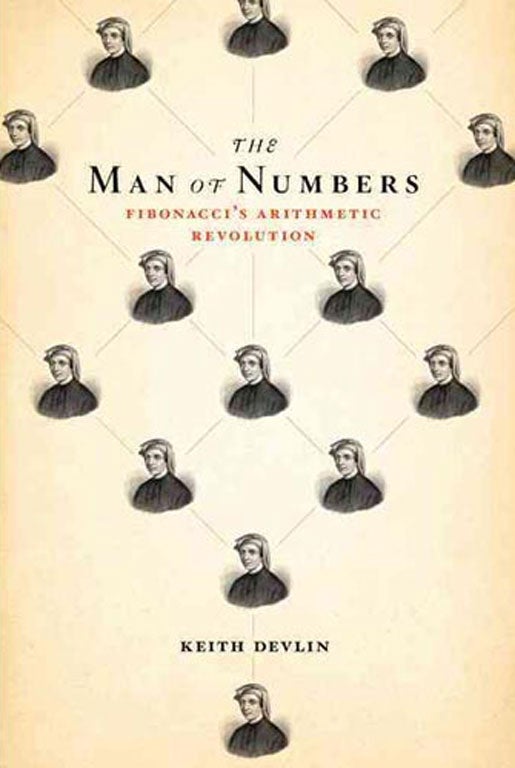The Man of Numbers: Fibonacci's Arithmetic Revolution, By Keith Devlin

Your support helps us to tell the story
From reproductive rights to climate change to Big Tech, The Independent is on the ground when the story is developing. Whether it's investigating the financials of Elon Musk's pro-Trump PAC or producing our latest documentary, 'The A Word', which shines a light on the American women fighting for reproductive rights, we know how important it is to parse out the facts from the messaging.
At such a critical moment in US history, we need reporters on the ground. Your donation allows us to keep sending journalists to speak to both sides of the story.
The Independent is trusted by Americans across the entire political spectrum. And unlike many other quality news outlets, we choose not to lock Americans out of our reporting and analysis with paywalls. We believe quality journalism should be available to everyone, paid for by those who can afford it.
Your support makes all the difference.Fibonacci Numbers are increasingly fashionable. Architects weave them into their buildings, and they figure heavily in books on the rapidly developing science of form in nature.
But like so much else – kilts-and-reels Scottishness, Valentine's Day – Fibonacci Numbers turn out to be something of a Victorian invention. According to Keith Devlin, the term was first uttered in 1870.
Until then this book's protagonist was known as Leonardo of Pisa (c.1170-c.1250) and his fame was initially for something of greater import than the magic numbers. This Leonardo, in the Liber Abacci (1202), brought Hindu-Arabic maths to Europe: the number system we use, from 0 to infinity via the powers of 10.
The cumbersome Roman number system made multiplication and division almost impossible. Algebra was, of course, also an Arabic invention, and that is the meat of Fibonacci's Liber Abacci (I think we shall keep calling him that). Just as we take the concept of zero for granted, algebra also become relatively easy with hindsight. Fibonacci's equations did not yet have the familiar xs and ys: instead, the unknown was called "the thing".
The Fibonacci Numbers comprise a series in which every term is derived from the preceding two added together, hence 0, 1, 1, 2, 3, 5, 8, 13, 21, 34, 55, 89 etc. The series, not discovered by Fibonacci but popularised by him, was originally a puzzle in which pairs of rabbits breed every month, and none die – how many rabbits will there be after a year?
A mathematical curiosity then? No, because many natural forms exhibit Fibonacci Numbers, especially flowers and fruits such as sunflower seed heads. Counting the number of left and right spirals in sunflower heads always reveals Fibonacci Numbers: typically 55 and 89.
The role Fibonacci Numbers play in the shaping of plants is the subject of much research, but Devlin's purpose is to give a more rounded picture of Fibonacci. It's no accident that the new mathematics entered Europe through 13th-century Italy. Trade was burgeoning and with it the need to manage transactions. The Man of Numbers is a valuable addition to the growing knowledge of our own hidden back-story: the crucial innovations that made us modern.
Order for £17.09 (free p&p) from the Independent Bookshop: 08430 600 030
Join our commenting forum
Join thought-provoking conversations, follow other Independent readers and see their replies
Comments